Photography
Photography

Archive Dora Diamant #1
A collection of photographs from the archives of the icon of underground and alternative Parisian nights Dora Diamant.
A self-taught photographer, Dora Diamant has left thousands of photos. The Dora Diamant Association, custodian of this archive, and Éditions L'Amazone have joined forces to bring them to life by devoting a series of publications to them. Each volume of the Dora Diamant Archive was created by a different person and is the result of a subjective selection and arrangement specific to its author.
Photos: Dora Diamant
Sélection: Antoine Trapp
Texte: Clara Pacotte
Edité par Archive Dora Diamant, Paris & Editions l'Amazone, Bruxelles, 2022
1ère édition - 300 exemplaires
Format 18 x 26 cm - 64 pages
Papier Magno Gloss 150g - couverture 300g

Notes on a life not lived
This publication is based on a project by Despina Vassiliadou that ran from 2015-16. It presents a collection of photographs taken during the period, accompanied by fictional short stories.
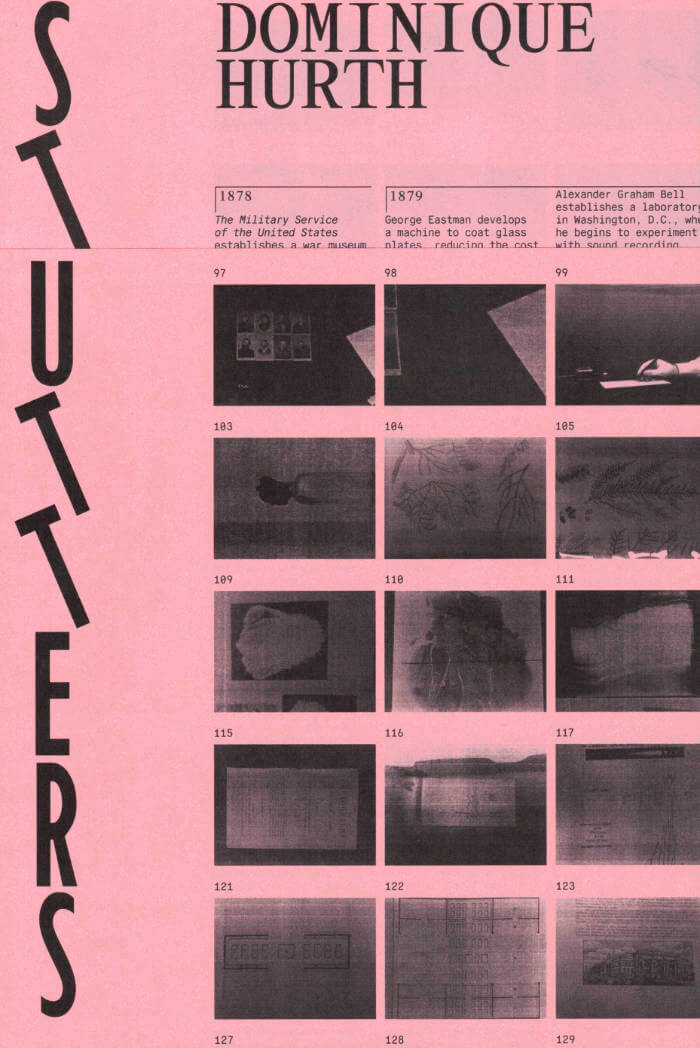
Stutters
In 2014, Hurth encountered four boxes of cyanotype prints by Thomas W. Smillie, the first custodian and curator of the Smithsonian Institution’s collection of photography (active 1868 to 1917). In her new work Stutters, Hurth builds on several years’ research to rework the original cyanotypes into visual montage, sequencing images that provide a record of Museum life as it documents a ‘national’ collection in the making. The work presents photographs of empty display cabinets and staged objects within the Smithsonian’s holdings, following divergent threads of photographic history, exhibitionship and collection-making, as well as developments in various technological apparatuses across the late 19th and early 20th century.
Through a meticulous process of xerox and printing reproduction, Hurth enlarges the world of each image and traces a photographic lineage, a process itself indebted to the cyanotype. Two overlapping sets of captions from the artist offer a subjective and scientific view of the photographs, inviting a cross-referencing of the “official”, if incomplete, bibliographic record with one that moves more freely across a historical timeline as a way to reflect on gaps in the archive.
Stutters includes three new texts, with Hurth considering the book’s entwined interests, as well as her own personal history with the Smithsonian and the work of Smillie. Additional contributions by authors and curators Ruth Noack and Kari Conte consider the ways in which artists’ projects like Stutters can quietly break apart the violent taxonomy of an archive, and instead use this shifting fragmentation to envision new meaning and bring into focus voices that have been excluded from history.
Dominique Hurth Born in France (1985), Dominique Hurth is a visual artist working with sculpture and installation, and within the relationship between sculptural matter and printed matter. Even though her installations are often concentrated on the form, a long and detailed research is strongly embedded in the development of this same form. It is by ways of archival research, journalistic investigation, writing and material experiments that the works develop, and it is by way of editing that the installation operates in the exhibition space. Her work was exhibited in several museums, galleries and institutions internationally (a.o. Palais de Tokyo, Paris; Hamburger Bahnhof, Berlin; Fundacio Tapies, Barcelona; Memorial of Ravensbrück, Fürstenberg/Havel; Württembergischer Kunstverein, Stuttgart) and is part of several collections. She is the recipient of several awards and residencies such as the Pollock-Krasner Foundation Grant (2016-17) and Prize of the Berliner Senate / Governing Mayor of Berlin at ISCP, New York (2014).

Time and Tide
“In selecting the photographs for this publication, Lisa Spilliaert (b. 1990) was adamant that the image of a sunrise should be among the first in her book. It is, indeed, an emblematic image. For anyone with a camera, such a splendid sunrise is an irresistible trope: a visual motif that simply begs to be captured and fixed on film. In reality, however, the magic of this scene resides in the fleeting, subtle changes in colours and vibrations. This is the dynamic that captivates us.
Photography is usually understood as a technique for ‘stopping’ the flow of time. But as Spilliaert here demonstrates, the impact of photography can also be used to manifest an awareness of time and transience. By accentuating the photographer’s fixed position vis-à-vis the endlessly changing light source, Spilliaert evokes a correlation between stasis and movement, between the cosmic and the mundane. This duality is echoed again in the confrontation of the two equivalent silhouettes: that of the photographer and of his alias or ‘partner’: a life-size technical camera.” — From ‘Time and Tide’ Edwin Carels
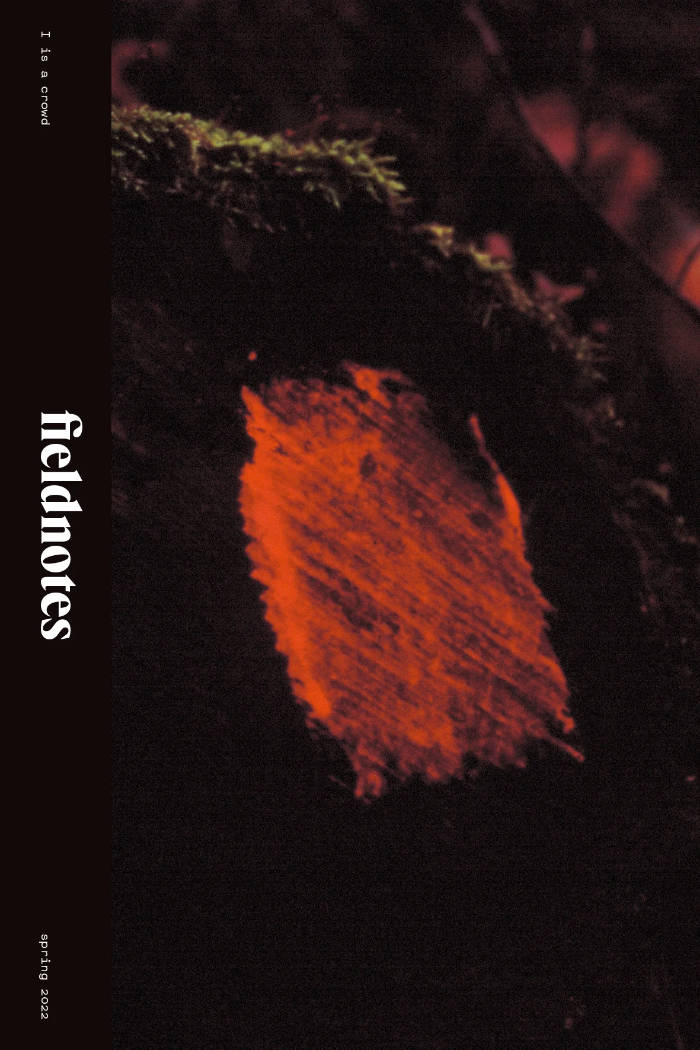
Fieldnotes Issue 3
Fieldnotes is a biannual print journal publishing new writing and artworks with a focus on practices that work between disciplines and against type. There is always a third thing between two things that are known; we are interested in whatever there is between translations/transitions, things-in-progress, converging genres, methods of excavation and formal innovation. The purpose of the journal is to provide a test site for ideas and research; a space for experimental modes and new prototypes.
The third issue of FIELDNOTES contains new work by:
CAConrad & George Finlay Ramsay
Charlie Hawksfield
Yvonne
Angus McCrum
Peter Gizzi
McKenzie Wark
Kate Paul
Michelle Williams Gamaker
Georges Bataille & Rachelle Rahmé
Declan Wiffen
Rosa Barba
Travis Jeppesen
Robert Glück & Arnold Kemp
Cecilia Pavón & Jacob Steinberg
George Lynch
Yuhan Shen

Nachbilder / Reflection pictures
Caravaggio’s Head of Medusa, 1596/97, painted in two versions, not only reflects light but is a painted reflection. Similarly, these photographs are all reflections in plate glass mirror. They document a relation in the present without content.
First edition of 50

Fieldnotes - Issue nr. 2
A quarterly print journal publishing new writing and artworks with a focus on practices that work between disciplines and against type. There is always a third thing between two things that are known; we are interested in whatever there is between translations/transitions, things-in-progress, converging genres, methods of excavation and formal innovation. The purpose of the journal is to provide a test site for ideas and research; a space for experimental modes and new prototypes.
The second issue of Fieldnotes contains new work by:
Apichatpong Weerasethakul
Steve Dutton
Liesl Ujvary
Akio Yuguchi
Evan Lavender-Smith
Dodie Bellamy
Paul Maheke & Giles Bailey
Yan Jun
Emily Charlton
Ed Atkins
Sam Buchan-Watts
Elizabeth Price
Mary Mussman
Carolyn Ferrucci
Hanne Lippard
Charlie Godet Thomas
Hannah Regel

Having a party (hope you will be there)
"Having a party (hope you will be there)", is a catalogue of an exhibition organized by Mickael Marman and D&TLG at CFAlive in Milan with artists from the black European diaspora, including original contributions, photos of the show, as well as a brand new intro text by Olamiju Fajemisin.

Photo No-Nos: Meditations on What Not to Photograph
At turns humorous and absurd, heartfelt and searching, Photo No-Nos is for photographers of all levels wishing to avoid easy metaphors and to sharpen their visual communication skills.
Photographers often have unwritten lists of subjects they tell themselves not to shoot—things that are cliché, exploitative, derivative, sometimes even arbitrary. Photo No-Nos features ideas, stories, and anecdotes from many of the world's most talented photographers and photography professionals, along with an encyclopedic list of more than a thousand taboo subjects compiled from and with pictures by contributors.
Not a strict guide, but a series of meditations on "bad" pictures, Photo No-Nos covers a wide range of topics, from sunsets and roses to issues of colonialism, stereotypes, and social responsibility. At a time when societies are reckoning with what and how to communicate through media and who has the right to do so, this book is a timely and thoughtful resource on what photographers consider to be off-limits, and how they have contended with their own self-imposed rules without being paralyzed by them.
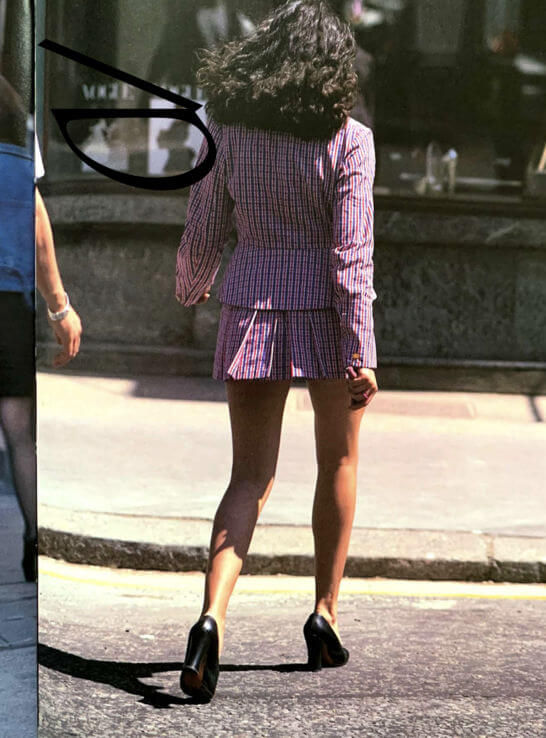
Bill Magazine 3
BILL 3 a special archival issue, features unpublished Martin Margiela lookbook photographs, a horse, street style from the 90’s, vases of Japan, a silver story, a flash forward and back, tennis, an icecube tray, more Margiela, Hysteric Glamour and a bunch of frivilous images.
The stories are sourced from the book collections of RareBooksParis and Julie Peeters.
Printed in 2020, bound in 2021.
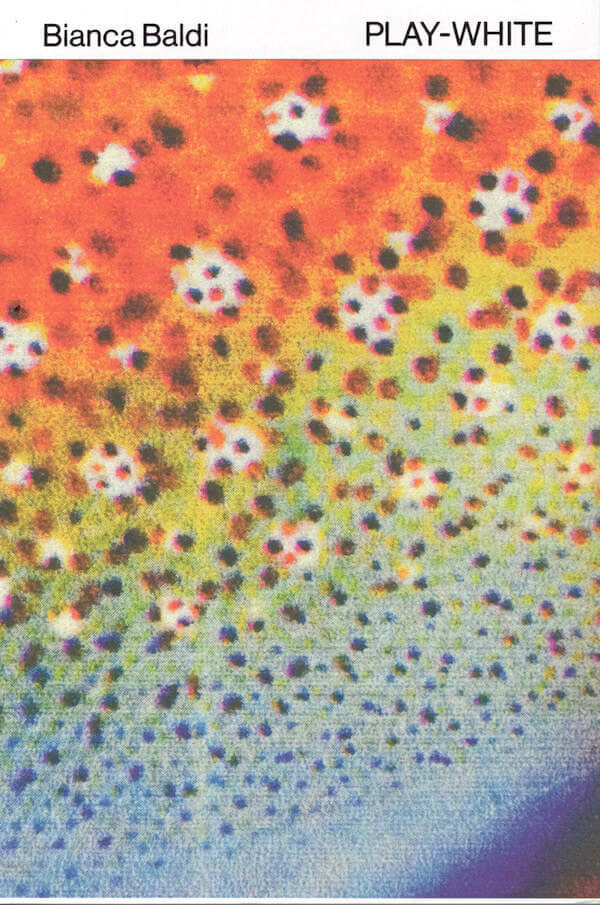
Play-White
The racist term "play-white" comes from the apartheid era, when it connoted a black or mixed race person who lived as a white person: “So and so is a play-white.” South African artist Bianca Baldi draws from studies of biomimicry and her own family history, as well as literary precedents—such as Nella Larsen’s novel Passing (1929)—to reflect on racial passing and the instability of racial identities. Play-White alternates between layers of visualization and moments of discretion in order to explore questions of presence and evasion beyond their representation in black and white.
With contributions by Bianca Baldi, Mika Conradie, Shoniqua Roach, Amy Watson, and others; design by Katharina Tauer & Wolfgang Hückel in collaboration with K. Verlag.
Published 2021

Can the Subaltern Speak?
Gayatri Chakravorty Spivak, Estefanía Peñafiel Loaiza
Gayatri Chakravorty Spivak's landmark essay in decolonial thought is animated for a new generation with art by Estefanía Peñafiel Loaiza.
In 1985 Gayatri Chakravorty Spivak's seminal essay, 'Can the Subaltern Speak' transformed the analysis of colonialism. In a deeply divided world Spivak's text interrogated the historical and ideological factors that, by obstructing the potential for certain subjects to be heard, maintained the degraded status of those subjects on the world's peripheries. The text remains, in the third decade of the twenty-first century, as compelling as ever, and affirms the continuing relevance of Marxism to contemporary decolonial thought.
In this Afterall Two Works edition, the essay is given new life in dialogue with especially commissioned artwork by Ecuadorian artist Estefanía Peñafiel Loaiza. Loaiza's preoccupation with questions of visibility and occlusion, the need for and absence of the image, has guide the creation of a mesmerising set of works. These form a visual vocabulary that echoes and refracts Spivak's central terms, bringing new inflections to an enduringly important text.
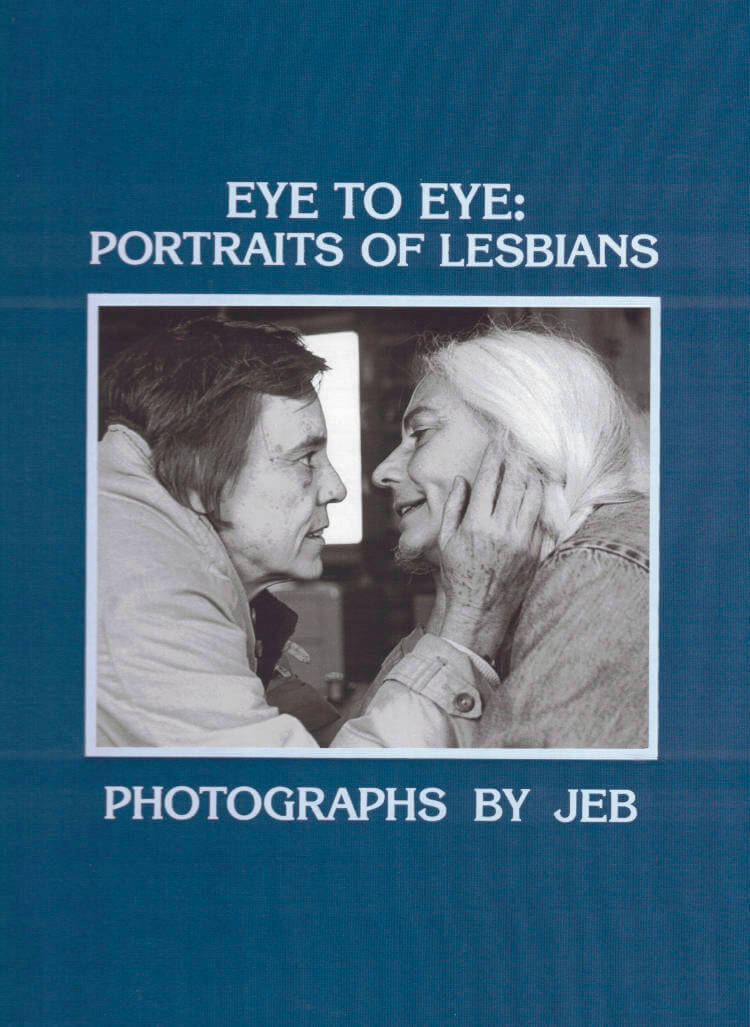
Eye to Eye: Portraits of Lesbians
In 1979, JEB self-published her first book, Eye to Eye: Portraits of Lesbians. In a work that was revolutionary for its era, JEB made photographs of lesbians from different ages and backgrounds in their everyday lives—working, playing, raising families, and striving to remake their worlds. The photographs were accompanied by writings from acclaimed authors including Audre Lorde, Adrienne Rich, Joan Nestle, and others. Various women pictured in the book also shared their personal stories. Eye to Eye signaled a radical new way of seeing, moving lesbian lives from the margins to the center, and reversing a history of invisibility. More than just a book, it was an affirmation of the existence of lesbians that helped to propel a political movement. Reprinted for the first time in forty years, Eye to Eye is a faithful reproduction of a work that still resonates today. This edition features additional essays from artist and writer Tee A. Corinne, former World Cup soccer player Lori Lindsey, and photographer Lola Flash.
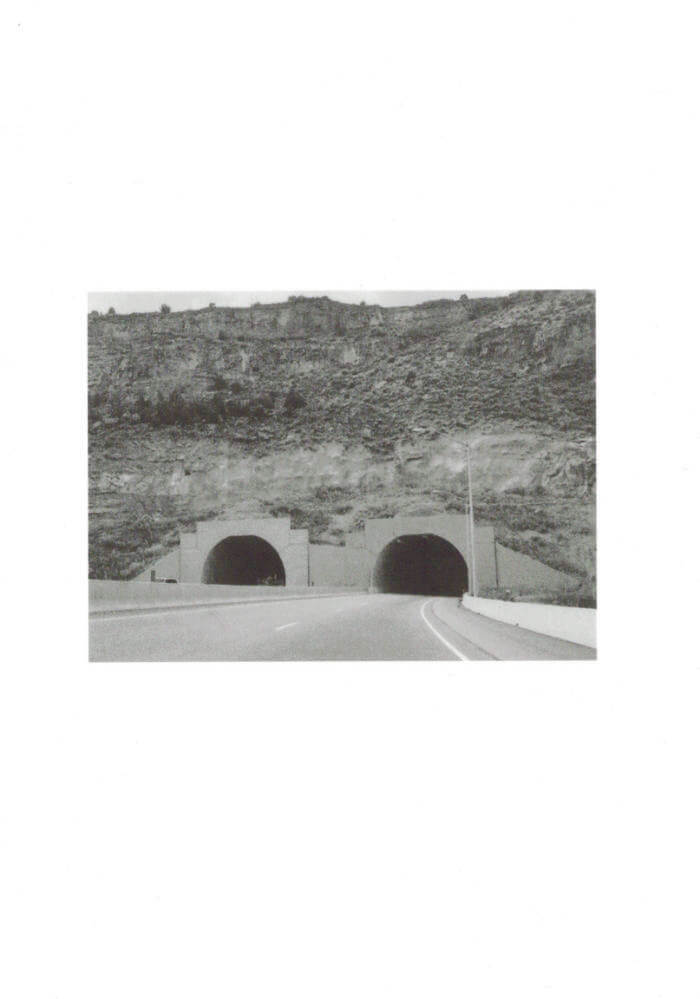
100+more
100+more is het resultaat van een beelden dialoog tussen Jelle Martens en Tim Bruggeman in het voorjaar van 2021. Beide verzamelden ze de voorbije jaren een uitgebreid digitaal archief met beelden van het internet, film stills, schermafbeeldingen, reproducties van kunstwerken en zelfgemaakte beelden. Deze publicatie brengt een selectie van 302 zwart-wit beelden samen vanuit een weloverwogen willekeurigheid.
100+more is the result of a visual dialogue between Jelle Martens and Tim Bruggeman in the spring of 2021. In recent years, both have collected an extensive digital archive with images from the internet, film stills, screenshots, reproductions of artworks and images they created themselves. This publication brings together a selection of 302 black-and-white images from a chosen randomness.
Offset
304 pages
Edition of 250
14 x 20 cm

Divided we stand, together we fall
This artist's book presents a set of photographs made by Belgian artist Sophie Nys during her stay in Zurich. It features each of the modernist fountains produced by designer Alfred Aebersold in the 1970s and scattered throughout the Swiss city. The images are associated with amusing and clever captions written by Leila Peacock, a Scottish artist living in Zurich.
In 1973, Alfred Aebersold won the competition organized by the Water Supply Department of Zurich for the design of a fountain. It was to be the visible part of a vast, autonomous and secured water supply system of 89 identical fountains distributed throughout the territory of the city. The context was that of the cold war. The threat, invisible but permanent, was the contamination of the public water supply network by an external agent. Aebersold—trained as an interior designer and founder, together with Jörg Hamburger and Herbert Merz, of studio Gruppe 3 in 1961—was representative of a Swiss design that followed the formal vocabulary of Max Bill. Bill contributed from the 1940s onward to the dissemination of ways of living and Western values to question those of Soviet ideology. Designed in the 1970s but recalling through its formal vocabulary a modernist, stable, and reassuring sculptural language expressed in the organicity and solidity of its forms, this fountain presents itself as a historical paradox of sorts. But it also presents itself as a visual symptom, set within the public space, of a necessity for a continued, ahistorical defense. The context changes, but the threat remains. And the fountain, masking its purpose in the functionality of its bowels—according to a Duchampian modus operandi, in which the sense one could assign to forms is obscured and diverted—, tirelessly spurts the purity of its liquid.

Cover to Cover
A long-awaited facsimile of Michael Snow's legendary artist's book, a classic of conceptualism
For years an out-of-print rarity, Canadian artist, filmmaker and musician Michael Snow's (born 1928) classic 1975 artist's book Cover to Cover is available once again, in this facsimile edition. Unconstrained by discipline, Snow famously remarked that his sculptures were made by a musician, his films by a painter. Flipping through Cover to Cover, which is composed entirely of photographs in narrative sequence, one might describe it as a book made by a filmmaker. Each individual page features a distinct moment, seen from one perspective on the front, and from a diametrically opposed angle on the back, occasionally pivoting between interior and exterior spaces. Midway through the book, the images are inverted such that the volume must be turned upside-down to be looked at right-side up. The result is an elegant, disorienting study in simultaneity. With this work, wrote Benjamin H.D. Buchloh, "Michael Snow has challenged the reader's/viewer's notion of a book, indeed one's very notion of perception."
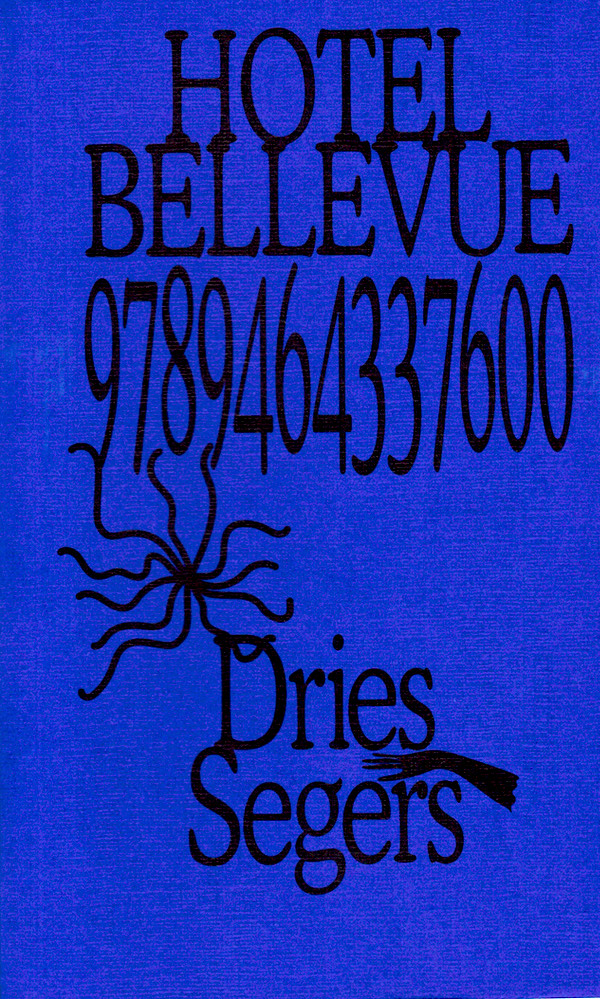
Hotel Bellevue
‘Hotel Bellevue’ is a photo book and a vocabulary centered around border trees, Celtic historical facts and visual speculation. This book is a manifesto for love, anger, the non-human, a wish to connect, to suggest, and to study. Only things from the heart deliver.
Published 2021.

Untitled
Sasha Phyars-Burgess’ first monograph, Untitled. Spanning three bodies of work, this 200-plus page monograph includes poems by Ser Alida and Aurora Masum-Javed, a conversation between Sasha Phyars-Burgess, Juliana Huxtable and Carolyn Lazard, and essay by Bill Gaskins. Designed by Studio Lin.
As recipient of the second annual Capricious Photo Award, Sasha is a vital, emerging voice in contemporary photography, engaging the charged line between documentary and fine art. Her work ranges from affecting studies on diaspora, family and place to revolving social phenomenons in which energy, beauty and power meet.
The second annual jury panel was helmed by Capricious Founder and Publisher Sophie Mörner and Associate Publisher Anika Sabin alongside Lauren Cornell, Katherine Hubbard, JOFF, Matt Keegan, Guadalupe Rosales, Ka-Man Tse, and Lyndsy Welgos.

wild wild Wild West & Haunting of the Seahorse
wild wild Wild West / Haunting of the Seahorse by Jonathan Lyndon Chase, part of a new book series of experimental narratives. This release of non-linear storytelling illustrates black queer bodies moving through fluid states of love, grief, and desire within the canons of science fiction, fantasy and horror. Like a love letter, Jonathan employs multi-sensory entanglements, a blending of the abstract and physical, to draw out complex histories of blackness, meditations on mental health, and queer futurity.
Jonathan Lyndon Chase is an interdisciplinary artist principally working in modes of painting, video and sculpture depicting queer black love and community amid the backdrop of urban and domestic spaces. This is their second book with Capricious Publishing—a debut book Quiet Storm was released in conjunction with Company Gallery in 2018. Chase was born in 1989 in Philadelphia, PA where they currently live and work.

Truant: Photographs 1970-1979
Throughout the 1970s, filmmaker Barbara Hammer toured the United States, Africa, and Europe, making film after film about women and the lesbian experience, both of which had seldom been seen by a woman, for women on screen before. She made a slew of now-legendary experimental films, including Sisters! (1973), Dyketactics (1974), Multiple Orgasm (1976), Sappho {1978), and Double Strength {1978), more or less inventing lesbian cinema at a time when such material had largely been relegated to the pornographic imagination of male artists and filmmakers. During this prolific period, Hammer photographed her travels, her lovers, moments of community and kinship between her collaborators on set, private and public performances, friends, strangers. Through these photographs, Hammer explodes traditional notions of female sexuality by showing it for what it is: complex, messy, abstract, human.
Barbara Hammer is an experimental filmmaker whose work has pioneered feminist and lesbian cinema for five decades. She has had film retrospectives at the Jeu de Palme (Paris), Museum of Modern Art (New York), Tate Modern (London), National Gallery of Art (Washington, Dq, Kunsthall (Oslo, Norway), Toronto Film Festival, and Pink Life Queer Festival (Ankara and Istanbul, Turkey). Her work was included in the 1985, 1989, and 1993 Whitney Biennials and is included in the permanent collections of the Australian Center for the Moving Image, the Museum of Modern Art (New York), the Centre Georges Pompidou, and elsewhere. She is the author of Hammer! Making Movies Out of Sex and life (Feminist Press 2009). An exhibition of her notebooks was presented at Company Gallery in Fall 2014. A follow-up exhibition at Company, Truant: Photographs, 1970 – 1979, featuring unseen photographs from the 1970s, opened in October 2017.

Se Te Subió El Santo (Are You In A Trance?)
Se Te Subió El Santo is a collection of self – portraits taken by the artist directly after she awoke every morning while away on a week-long residency in Iowa City, IA at the Center for Afrofuturist Studies in Spring 2016. This daily practice confronts notions of the artist’s interests in rendering a full self implicit of gender, race, sexuality, and spirituality while challenging and collapsing the intersections of each identity as well.
The title of the work is taken from Ana Mendieta, the Iowa Years: A critical study, 1969 through 1977 where Julia Ann Herzberg writes in the dissertation:
Ana and Raquelin Mendieta’s vocabulary contained many Afro-Cuban idiomatic expressions. For example, they would often respond to a friend who was acting in an unruly or hyperactive manner by asking” “Se te subió el santo? (“Are you in a trance?”) In the Afro-Cuban context, the expression “subirse el santo” is used in religious ceremony when the orisha/saint takes possession of the believer.
The monograph also includes an essay by author Akwaeke Emezi.
First edition, 94 page, black and white, leather bound hardcover with white foil embossment
TIONA NEKKIA MCCLODDEN is an interdisciplinary research-based conceptual artist, filmmaker and curator whose work explores, and critiques issues at the intersections of race, gender, sexuality and social commentary. McClodden’s interdisciplinary approach traverses documentary film, experimental video, sculpture, and sound installations. Themes explored in McClodden’s films and works have been re-memory and more recently narrative biomythography.

Non-Human Persons
The first book of Melanie Bonajo’s new series, Matrix Botanica.
Non-Human Persons explores our relationship with Nature photography, animals and the Internet. It is a 140+ page, softcover, full-color, magazine-style artist book designed by Experimental Jetset.
Can we send funny animal pictures to space for aliens to discover the Earth’s ecosystem? Our enormous access to animal pictures on the Internet tramples our awareness that only humans possess self awareness, language, culture, land and customs. But when does a lion stop being a lion? How are typical Nature photography categories designed by the hands of science replaced by the images of amateurs who document the disappearing surroundings of wildlife by ever expanding urbanization? As a result, do we need complete revised scientific categories for these images?
For 10 years, Melanie Bonajo has collected thousands of animal pictures online, this book is her exploration of these questions.
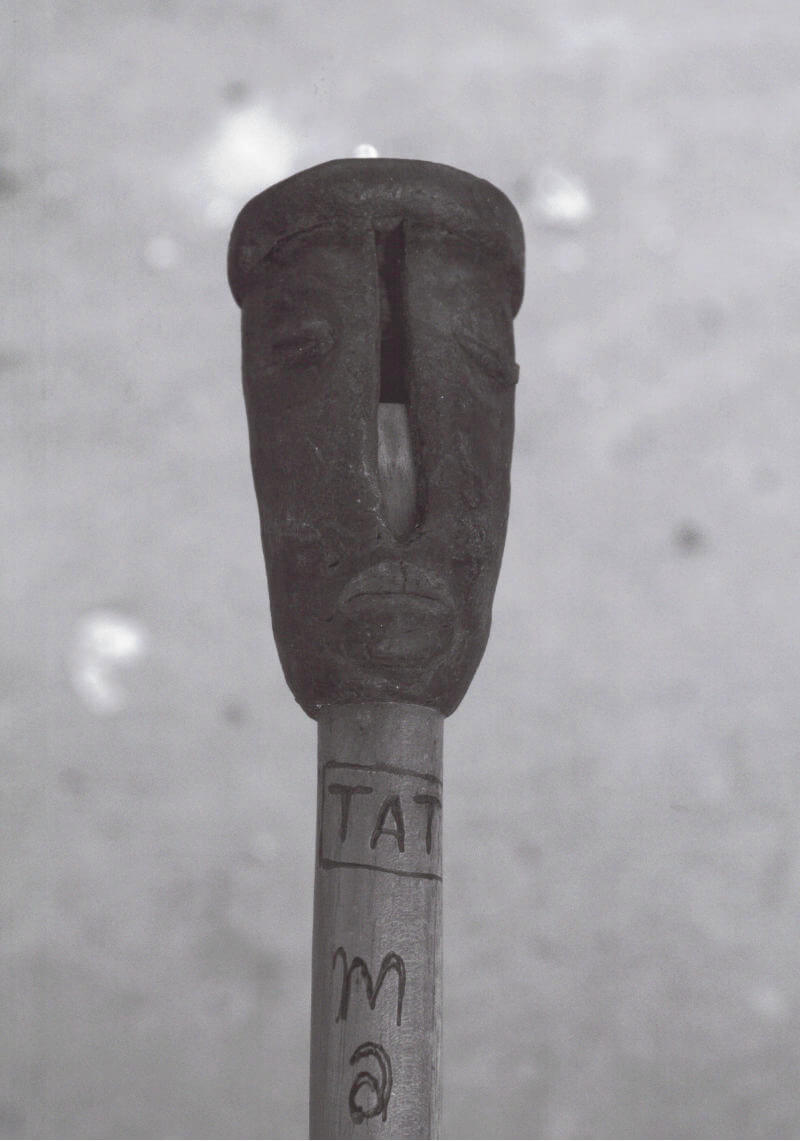
Sobre El Río (Passage)
This publication tells of the journey of a photographic research of the origins of cumbia music along the lower Magdalena river in Colombia.
The Magdalena river marks the birthplace and distribution system for cumbia music, which in its beginnings, dating back to the colonial era, was a prohibited ritual dance and one of the ways in which the indigenous and African populations interacted. Musically, it is made up of a combination of African rhythms, indigenous instruments, and Spanish lyrics. Since the 1950s cumbia has spread beyond Colombia to the working-class neighbourhoods in Latin America, adapting and picking up local specifics at each place.
The Magdalena river also stands for one of many rivers in the world that acted as distribution channels. It speaks of water cultures, which, located along rivers, have absorbed very different influences from the interior of the countries and the world – making them multifaceted and thoroughly mixed. This becomes evident in the music as well.
The publication includes photographs, recordings of conversations with cumbia musicians, and short texts about the journey.
Mirjam Wirz (born 1973) is a photographer and artist based in Zurich.

Reynaldo Rivera
Lauren Mackler, Hedi El Kholti
Throughout the 1980s and 1990s, Reynaldo Rivera took personal photos of the Los Angeles that he lived in and knew: a world of cheap rent, house parties, subversive fashion, underground bands, and a handful of Latino gay and transvestite bars: Mugi’s, The Silverlake Lounge, and La Plaza. Most of these bars are long closed and many of the performers have died. But in Rivera’s photographs, these men and women live on in a silvery landscape of makeshift old-style cinematic glamour, a fabulous flight from unacceptable reality.
As a teenager, Rivera took refuge in used bookstores and thrift stores, where he discovered old photo books of Mexican film stars and the work of Lisette Model, Brassai, and Bresson. Inspired, he bought a camera and began photographing people at his hotel. In 1981 he moved to Echo Park and began taking photos for the LA Weekly.
This book is an ensemble of almost 200 images selected by Hedi El Kholti and Lauren Mackler spanning more than two decades in Los Angeles and Mexico. The book also includes Luis Bauz’s story, “Tatiana,” about one of the subjects of these photographs; a critical essay on Rivera’s work by Chris Kraus; and a novella-length conversation between Rivera and his friend and contemporary Vaginal Davis about their lives, work, fantasies, and collective histories.
Edited by Hedi El Kholti and Lauren Mackler
With Luis Bauz, Vaginal Davis and Chris Kraus